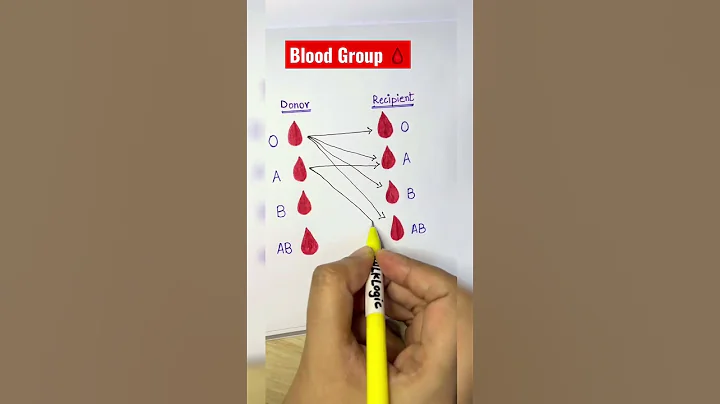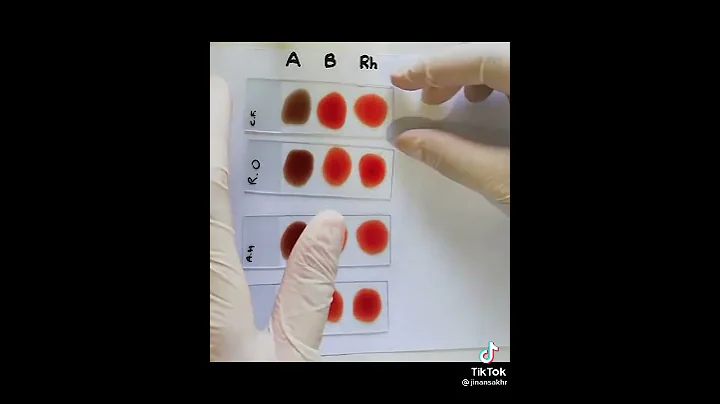Revealing the mystery of blood type

Carl Landsteiner
The blood flowing endlessly in the human body is the source of human life. Once a large amount of blood is lost, it will cause shock , and even death. If the blood of healthy people can be transfused in time, the lives of many dying patients can be saved. Blood transfusion is already a common emergency treatment. However, it is only in the past hundred years that humans have a correct understanding of their own "fountain of life" and mastery of blood transfusion technology. However, it has taken a long way for mankind to understand blood transfusion, and it even cost lives.
As early as ancient times, people looked at blood in awe, thinking it was the source of life, and tried to use blood to prolong life or save dying lives. In the ancient Roman arena, the victorious gladiator would drink the opponent's blood in order to gain the opponent's courage and strength. Blood-drinking therapy was once very popular in the world. According to historical records, in 1492, the Pope fell ill and drank the blood of three boys. As a result, all four of them, including himself, died.
In 1616, the British doctor Harvey discovered blood circulation and laid the scientific foundation for blood transfusion. In 1667, French doctor Jean Denis used sheep blood to transfuse a critically ill young man, and the patient was saved. Later, he used the same method to transfuse blood to other patients, but died one after another. For this reason, the French government convicted him of "manslaughter" and ordered a ban on blood transfusions. Over the next 150 years, blood transfusion entered the dark ages.
It was not until the 19th century that British obstetrician and gynecologist Brendel tried blood transfusion again. He discovered the dangers of animal blood transfusion to humans and advocated using human blood for transfusion. In 1818, he successfully used blood transfusion to save the life of a pregnant woman suffering from postpartum hemorrhage, becoming the first successful blood transfusion in human history. Subsequently, many doctors followed Brendel's footsteps and made various improvements in blood transfusion methods and equipment, allowing many patients on the verge of death to regain their health after receiving blood transfusions.
However, in the clinical practice of a large number of blood transfusions, accidents occur one after another: some patients will suddenly develop symptoms such as chills and fever, headache chest tightness , shortness of breath and heart failure after receiving blood transfusions, and may even die. At first it was thought that this might be caused by coagulation of the transfused blood. However, after the problem of preventing blood coagulation is effectively solved, transfusion reactions still occur frequently. People also speculated that it might be caused by bacterial infection during blood transfusion. However, after strict aseptic surgery, the risk still often occurs.
In order to uncover the mystery of blood transfusion reactions, people have conducted various explorations and studies. Among them, Austrian doctor and pathologist Karl Landsteiner first revealed the answer.
Landsteiner investigated the medical cases of many blood transfusion patients. What is puzzling is: Why do some people have no reaction at all after receiving blood transfusion, while others have fatal reactions? Is it caused by racial differences? No! The facts answered in the negative. So, is it due to gender differences or blood differences? Neither! Because even among the same relatives, same-sex blood transfusions between father and son, brothers, and sisters, sometimes fatal blood transfusion reactions will occur, but the proportion is smaller.
Landsteiner made careful pathological analysis of many patients who died due to blood transfusion reactions. From the pathological changes of these patients, he speculated: whether the input blood was mixed with the patient's original blood, resulting in Is it caused by some undesirable change? What exactly is the change? This series of mysteries can only be solved through practice.

Landsteiner was doing pathological analysis
So, he summoned five colleagues in the laboratory and discussed his ideas. He wanted to first see what changes would happen after the blood of the six people in the laboratory was mixed. He carefully extracted a small tube of blood from each person's vein, and then separated it into two parts: light yellow translucent serum and bright red red blood cells . Then, in a large white porcelain plate, drop 6 drops of serum from the same person separately. Landsteiner then separated red blood cells from each person's blood and dropped them on each drop of serum.
In an instant, a strange phenomenon appeared: after a few drops of serum were dripped into the red blood cells, they showed a uniform light red color; while the red blood cells dripped into the other few drops of serum condensed into flocs, and red clots were scattered. In the light yellow serum, it forms a sharp contrast. What's going on with
? Let’s look at the situation of the second person. Landsteiner dropped the second person's serum on the porcelain plate one by one, and then dropped the red blood cells of the six people on each drop of serum. As a result, two completely different phenomena also appeared. Landsteinner expressed with a '+' sign any flocculent aggregation that occurred after being dropped into red blood cells, and a '-' sign if no agglutination occurred. When he tested the serum of six people in the same way, he came up with an epoch-making table.
Landsteiner was fascinated by this table showing the experimental results. He thought hard for several days and carefully analyzed the meaning of this table. He found that when each person's serum meets his or her own red blood cells, agglutination will not occur; but when different people's red blood cells mix with different people's serum, different results may occur. If a coagulation reaction occurs, the flocculent clumps will block the capillaries in the body. Isn't this the root cause of transfusion reactions? Thinking of this, Landsteiner suddenly became enlightened and couldn't help but jump up with joy.
In this experiment, the reactions of 6 people happened to show three different types. In the first and sixth cases, all red blood cells did not undergo agglutination reaction, and Landsteinner classified them as type I; in the second and fifth cases, the agglutination reactions were the same, and were classified as type II; and the remaining third and fifth cases had the same agglutination reaction. The fourth case is the same and is classified as type III.
Based on the above results, in 1900 Landsteiner officially announced that humans have three types of blood. The agglutination caused by the mixing of red blood cells and serum of different blood types is the secret of fatal blood transfusion reactions. He also used type II and type III serum to make standard serum for determining human blood types. As long as the blood type is determined in advance before blood transfusion and the transfusion recipient is selected with the same blood type as the patient, safety can be ensured.
In 1902, Dr. Dicastero repeated Landsteiner's experiment on 155 normal people and found that 151 people had the same reaction type as the blood type reaction announced by Landsteiner, while the red blood cells of the other 4 people, In addition to not agglutinating with one's own serum, it agglutinates with other people's serum, which indicates the existence of a fourth blood type. Because there are relatively few people with this blood type (accounting for about one-tenth of the population), Landsteiner only conducted experiments on 6 people, so he did not discover its existence. At that time, Dr. Di Castro called this blood type type IV (now type AB).
In 1907, Czech doctor Jansky summarized the relationship between the four blood types I, II, III and IV, and unified the blood types into: O type, A type, type B and AB type. Among them, type O Blood will not undergo agglutination reaction no matter which blood type is transfused to a person, so it is called a 'universal transfusion recipient'; on the contrary, a person with AB blood type cannot be transfused with any other blood type except those with the same blood type. However, he can receive blood transfusions of any blood type without causing agglutination reaction, so he is called ' universal blood recipient '.

ABO blood type system
The mystery of the blood type was finally revealed, and then blood transfusions became widespread. However, as time went by, some people discovered that even with the same type of blood transfusion, some people may have a transfusion reaction or even die. This is why Woolen cloth?
In recent decades, many medical workers have continued to conduct in-depth research on the basis of A. B. AB. etc. If a patient receives blood of the same type but different numbers, multiple transfusions may also cause a transfusion reaction. So far, it has been discovered that in addition to the ABO blood group system, there are also the MN system, the P system, and the RN system. The discovery of the
blood type was a leap forward in mankind's understanding of its own "fountain of life" and opened a safe channel for blood transfusions between people. Landsteiner won the 1930 Nobel Prize in Medical Physiology for his epoch-making discovery. prize. Landsteiner was born in Vienna on June 14, 1868 and died in New York on June 25, 1943. He made significant contributions to the study of human blood types and earned the title "Father of Blood Types."





















